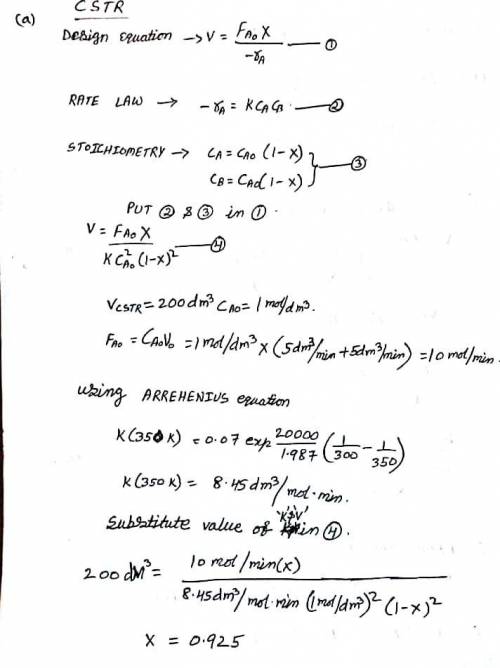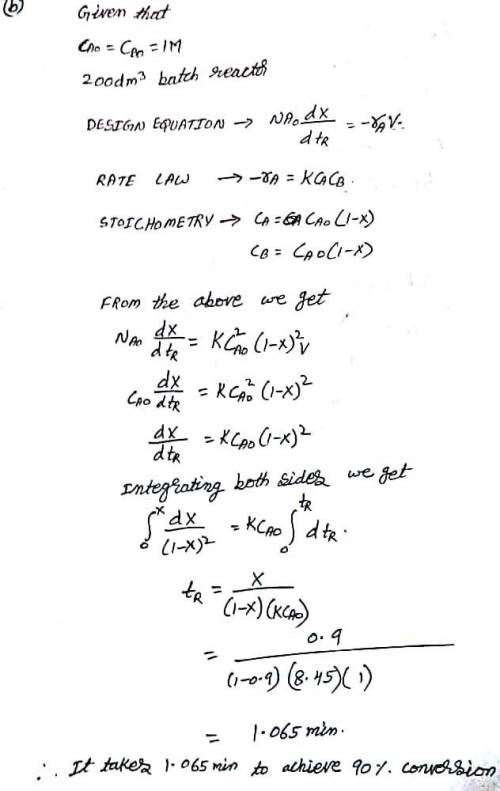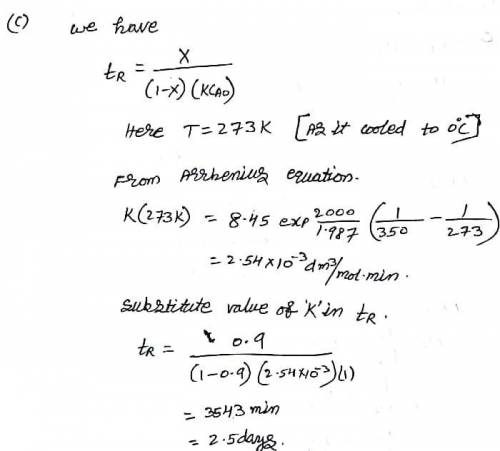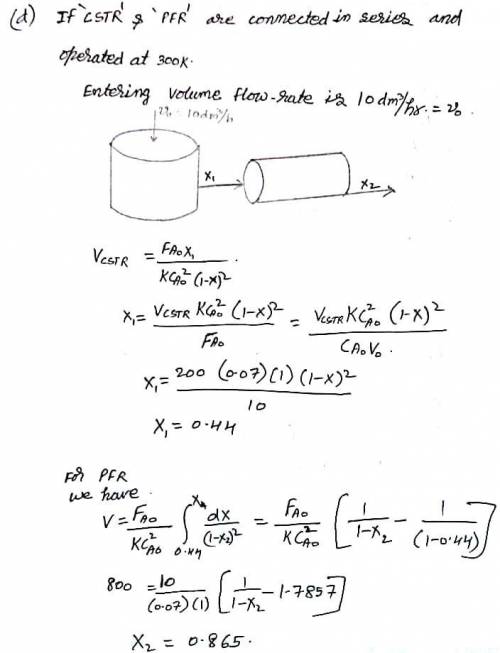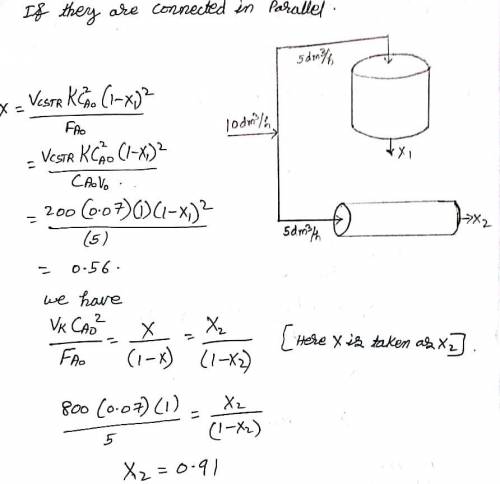The liquid-phase reaction:
A + B → C,
follows an elementary rate law and is carried out...

Engineering, 25.02.2020 05:14 gatorlove00
The liquid-phase reaction:
A + B → C,
follows an elementary rate law and is carried out isothermally in a flow system. The concentrations of the A and B feed streams are 2 M before mixing. The volumetric flow rate of each stream is 5 dm3/min, and the entering temperature is 300 K. The streams are mixed immediately before entering. Two reactors are available. One is a gray, 200.0-dm³ CSTR that can be heated to 77C or cooled to 0C, and the other is a white, 800.0-dm³ PFR operated at 300 K that cannot be heated or cooled but can be painted red or black. Note that k 0.07 dm³ /mol-min at 300 K and E 20 kcal/mol.
Which reactor and what conditions do you recommend? Explain the reason for your choice (e. g., color, cost, space available, weather conditions). Back up your reasoning with the appropriate calculations.

Answers: 3


Other questions on the subject: Engineering

Engineering, 03.07.2019 14:10, BardiFan
Amass of m 1.5 kg of steam is contained in a closed rigid container. initially the pressure and temperature of the steam are: p 1.5 mpa and t 240°c (superheated state), respectively. then the temperature drops to t2= 100°c as the result of heat transfer to the surroundings. determine: a) quality of the steam at the end of the process, b) heat transfer with the surroundings. for: p1.5 mpa and t 240°c: enthalpy of superheated vapour is 2900 kj/kg, specific volume of superheated vapour is 0. 1483 m/kg, while for t 100°c: enthalpy of saturated liquid water is 419kj/kg, specific volume of saturated liquid water is 0.001043m/kg, enthalpy of saturated vapour is 2676 kj/kg, specific volume of saturated vapour is 1.672 m/kg and pressure is 0.1 mpa.
Answers: 3

Engineering, 04.07.2019 18:10, qwertylol12345
Different types of steels contain different elements that alter the characteristics of the steel. for each of the following elements, explain what the element does when alloyed with steel.
Answers: 2

Engineering, 04.07.2019 18:10, winterblanco
The higher the astm grain-size number, the coarser the grain is. a)-true b)-false
Answers: 3
You know the right answer?
Questions in other subjects:




Mathematics, 11.05.2021 16:20


Computers and Technology, 11.05.2021 16:20



Mathematics, 11.05.2021 16:20

Advanced Placement (AP), 11.05.2021 16:20

